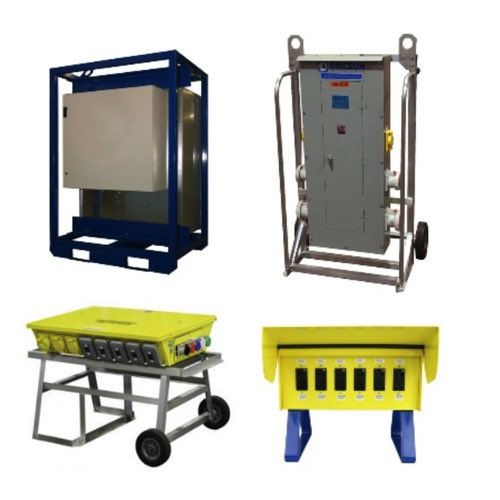Power Distribution Units

Power distribution units are modern electrical system components, found principally in data centers, that serve an extremely basic but crucial function: delivering power to multiple "end-use" devices. There are two main configurations of power distribution units found in contemporary data centers. The first serves as a basic power distribution unit. The second, and more common, type is a power distribution unit that also offers power monitoring (also known as metering).
Many data centers deploy power distribution units alongside uninterruptible power supplies to keep the distribute power when there's an outage or when the utility power fluctuates. Basic PDUs provide very simple power pass-through. They are inexpensive and work well in environments that have stable input power and output voltages. More dynamic environments need a little more sophistication and can have either intelligent PDUs or switched PDU systems that provide advanced control—remote control of the outlets, for instance, or remote monitoring, which is just good for business when you are a facility manager. Power distribution also has a lot to do with balancing loads and cutting the risk of downtime across critical systems.
More Information about Power Distribution Units
Intelligent power distribution units do far more than just hold the plug: They include intelligent features that enable remote management of individual outlets or groups of them. This can be very handy indeed because it allows IT administrators to reboot unresponsive servers, manage power usage, or even automate power uptime for equipment maintenance—all from the comfort of the IT work area. In addition, some PDUs—with the “environmental awareness” replete with temperature, humidity, and airflow sensors—also offer an almost total view of what’s going on inside the rack.
FAQs
Do PDUs provide reliable power from a power source to multiple devices as well as remote outlet control and power consumption monitoring?
Yes, PDUs provide reliable power from a power source and, in advanced models, offer remote outlet control and power consumption monitoring for connected devices..
Differences between Power Supplies, Inverters, Uninterruptible Power Supply, and Transformers
Power Supplies with Power Metering
A power supply converts one type of power to another. The most common example is a power supply that takes AC voltage and converts it to DC voltage. While it is very common to use power supplies in industrial applications, one very common place to see a power supply used is for the devices such as: smartphones, laptops or tablets. Most devices come with a power cord that has a bulky block on the end of it. This block is where the power supply is located. Most devices do not use AC power, which is the type of power being supplied to homes. They use some form or DC power. The power supply changes the AC voltage to the correct DC voltage for the device.
Inverters
Inverters work in a similar way to power supplies, with one major difference, instead of converting AC power to DC power, the inverter does the opposite. It converts DC power to AC power. DC power is created by devices such as solar panels or batteries, but most homes require AC power. To convert the DC power that is generated by the solar panels, an inverter is used.
Transformers
Transformers convert one type of AC power to a different type of AC power. For example, homes commonly use 120 VAC and automatic sprinkling systems have valves that require 24 VAC. A transformer converts 120 VAC to 24 VAC so the sprinkler valves can operate properly. Transformers come in many different shapes and sizes. and can convert AC power up or down.

